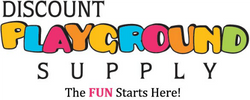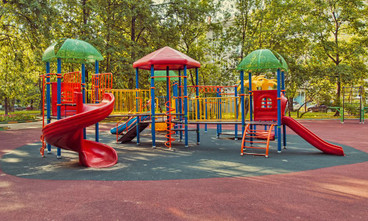Playgrounds are safe spaces where children can explore and develop their cognitive and physical skills. However, playgrounds must be precisely curated to ensure maximum safety and satisfaction for all ages.
Playgrounds should be designed for three primary age groups. Whether you’re constructing a playground at a local park, recreation center, or school, the following information is sure to spark a vision.
Infants and Young Toddlers: 6 to 23 Months
Babies develop quickly from the moment they’re born. Nevertheless, little ones fall all the time as they learn to walk, so they require carefully curated playgrounds to encourage learning and physical development. The key playground equipment pieces for the youngest age group include low ramps, small slides, and bucket-seat swings to ensure their protection. You should also include soft barriers, low enclosures, and cushioned flooring.
Remember that each item should help them develop essential motor skills without overwhelming them with complexity.
Preschoolers: 2 to 5 Years
Preschoolers are bundles of energy and curiosity who are always exploring how to climb, jump, and balance with greater confidence. They’re interacting with peers, sharing, and playing cooperatively. Not to mention, imaginative play is at an all-time high at this age. Therefore, their playgrounds should foster social connections. Sand pits, climbing structures, merry-go-rounds, and sports areas will enhance socialization and overall development.
Preschoolers also need equipment with escalating difficulty levels. Obstacles increase strength, coordination, and confidence. Items such as low balance beams, climbing nets, and rung ladders will push them to overcome the challenge.
School Age: 6 to 12 Years
The final age group that playgrounds should be designed for is 6 to 12 years. This group includes kids of a wide range of social intellect and physical capabilities. Therefore, the playground must reflect this diverse stage of development. Tall slides, monkey bars, rope bridges, and advanced climbing walls can all accommodate advanced motor skills.
Team-building spaces also establish a collaborative environment where kids can learn cooperation and problem-solving skills. Obstacle courses that necessitate a group effort to traverse the components—such as rope nets, cooperative balance beams, and group puzzle-solving tasks—can cultivate these valuable qualities. Climbing frames or structures that incorporate elements requiring multiple children to operate encourage the kids to interact and coordinate their efforts for shared enjoyment. This may include playground pieces such as seesaws or merry-go-rounds.
Lastly, items such as basketball hoops, soccer goals, and tetherball poles also promote both physical fitness and teamwork.
Discount Playground Supply wants to help you formulate a customized, age-appropriate playground with our commercial playsets for sale. Sort through the playgrounds by age to ensure everyone from toddlers to preteens has a suitable space to socialize, exercise, and grow.

